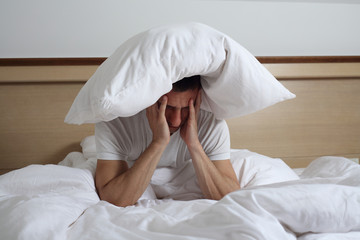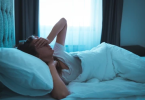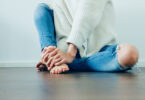At some point in time, we all imagined (and desired) a world without sleep. Sleep comprises almost a third of our lives. A person who lives up to 90 years, for instance, will consume a total of 30 years sleeping! In a productivity-driven world, that spells disaster.
The true purpose of sleep is not fully understood yet. However, it remains to be one of the essential components of a healthy life. We all know about its restorative powers—that is, after sleep, an individual is made anew in a sense because mental clarity and physical vigor reset to original—or is probably even heightened.
Sleep disorders make sleeping, as an experience, less desirable. In this article, we’re going to explore common sleep disorders, their symptoms and ways of treating them.
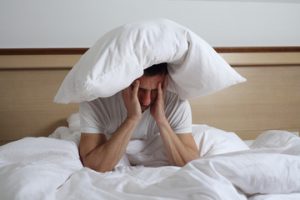
7 Common Sleeping Disorders That Most People Suffer From
1. Insomnia
Insomnia, or the inability to sleep or to stay asleep, is the most common sleep disorder afflicting almost a third of the adult population. People with insomnia find it difficult to keep a regular sleeping time or complete 7 hours of restorative sleep. Ten to fifteen percent of sufferers report that it reduces or adversely affects their productivity during the daytime.
Except for some rare cases, insomnia is a symptom of an underlying problem instead of being a root of the problem. Full restorative sleep is a sign of excellent health. Poor sleep signals that something is amiss in the body’s balance and it could be minor or severe medical or psychiatric problem. A person can develop insomnia at any age. It can stay for a few days or weeks. Some insomnia lasts indefinitely.
One of the most common triggers of insomnia is stress. Common sources of stress that could trigger insomnia include exams, cold, indigestion, itchy rash, muscle cramps—and even the thought of getting surgery.
Serious mental stresses like anxiety, tension (both physical and mental) and nervousness can trigger short-term insomnia that could last for up to 3 weeks. Long-term insomnia, which could last for months or years on end, is caused by factors such as that of the sleeping environment.
2. Restless Leg Syndrome
One of the most intriguing and unusual sleep disorder is the Willis-Ekbom Disease or more commonly known as restless leg syndrome (RLS). About 10% of the population is afflicted by RLS and is observed to be more common in women.
People with RLS feels an unpleasant and comfortable sensation. Also, RLS causes an irresistible urge to move the legs.
Symptoms of RLS often start late in the afternoon or early evening and progressively become severe as the night goes on. The symptoms are also aggravated when the person is resting.
Treatment for the mild symptoms of RLS includes reducing the consumption of alcohol and caffeine. Exercise can also help alleviate or remove the symptoms. In severe cases, doctors can prescribe a medication to reduce the symptoms of RLS sufferers and improve their sleep.
3. Narcolepsy
A person with narcolepsy cannot control the cycle of his sleep and wakefulness. Thus, they may experience excessive sleepiness during the daytime. This results in intermittent, and often, uncontrollable episodes of falling into sleep during the day. They can even fall asleep suddenly even during an activity—like driving—at any time of the day.
Normally, people experience early and deep sleep stages before entering into REM sleep (usually, after 90 minutes). People with narcolepsy enters REM sleep almost instantly but fails to sustain a restorative sleep after REM. Thus, a person suffering from narcolepsy wakes up periodically during the night.
Scientists are still unsure as to the exact cause of narcolepsy. A deficiency in the hypocretin (or orexin), a hormone that regulates appetite and sleep, may contribute to the problem (although much research is needed to help shed more light on the condition).
Furthermore, imaging reveals that there are some abnormalities in areas involved in regulating REM sleep. What is clear is, there is an interplay of factors that ultimately lead to narcolepsy.
Current treatment available for narcolepsy is medication. Also, a person with narcolepsy will be dependent on the medication for life.
4. REM Sleep Behavior Disorder
Normal sleep has two stages: rapid eye movement (REM) sleep and non-REM (NREM) sleep. During REM sleep, the brain is as working like that of an awake person. REM sleep is where dreaming occurs thus areas of the brain responsible for movement lit up.
However, the body is paralyzed temporarily during this stage and is prevented from acting out movements in the dream.
People suffering from REM Sleep Behavior Disorder, the body is either incompletely paralyzed or not paralyzed at all. Thus, they act out intense, vivid and even violent dreams. They can talk, kick, sit, jump, and flail their arms, punch, yell and grab. REM Sleep Behavior Disorder is treated by medications.
5. Sleep Apnea
Sleep apnea is a treatable condition but since underlying cause is oblivious to the sufferer, it is either ignored, or the symptoms passed up as that of other illnesses.
A person with sleep apnea has a partial or complete blockage of the throat that limits or blocks the air that enters the lungs while breathing during sleep.
6. Sleepwalking
Unlike REM Sleep Behavior Disorder, sleepwalking (also somnambulism) occurs during NREM deep sleep. Aside from the obvious symptom of walking during sleep, sleepwalking also exhibits complex behavior. They can sit, look and walk around the room or house, go out of the house or even drive long distances.
Children are more likely to suffer from sleepwalking that adults. In general population, it is estimated that the prevalence of sleepwalking is somewhere between 1% and 15%.
7. Sleep Terrors
Although confused with nightmares, sleep terror is different and is often more traumatic and a nightmare. For one, a nightmare has an emotional narrative. A person who just had a nightmare can identify a detail in the dream that caused the terror.
Sleep terrors don’t have a narrative—just a pure notion of danger and fear. A person who suffers from a sleep terror can scream and produce a short burst of violent movement in response to their feeling of fear.
What’s difficult with sufferers of sleep terrors is, since they are not fully awake, it’s difficult to pacify them. Terror persists even after the person has fully woken up.
This results in poor oxygen supply in the brain that causes poor sleep experience resulting in morning headaches and daytime sleepiness.
The most telling symptom of sleep apnea is excessive snoring, and only a person sleeping beside the sufferer can notice it—thus sufferers often do not know the onset of the condition. Since apnea can cause one to stop breathing momentarily many times in the night, morning headaches become a common experience that sufferers pass up as normal.
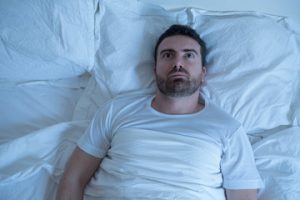
Conclusion
Sleep is a vital component, not only of a healthy life but an enjoyable one. In a sleep-deprived society, like that of what we are in today, we look at sleep time as a luxury more than a necessity.
Sleep disorders contribute to this. What is surprising is, sleep disorders are sometimes caused by our initial intent to deprive ourselves of sleep. An extended period of sleep deprivation can mess up with the normal sleep-wake cycle causing a myriad of sleep-related disorders.
The best way to prevent disorder is simple—prioritize a restorative sleep. The best way to treat sleep disorder is to restore balance and tackle the problem at its core the soonest it is diagnosed.
Find some of the latest deals now.
YOU SHOULD ALSO READ THESE:
- 10 Easy Ways To Get The Best Sleep Ever
- The Causes And Dangers Of Oversleeping
- How A Sleep Calculator Can Help You
- Natural Remedies That Will Help You Sleep Properly
Author Bio
Usman Raza is a freelance writer, marketing specialist at SnoringAids.com and co-founder of UsmanDigitalMedia.com. When not working, he’s probably spending time with his family. Follow him on Facebook @usmanraza40 and Twitter @usmanintrotech.

